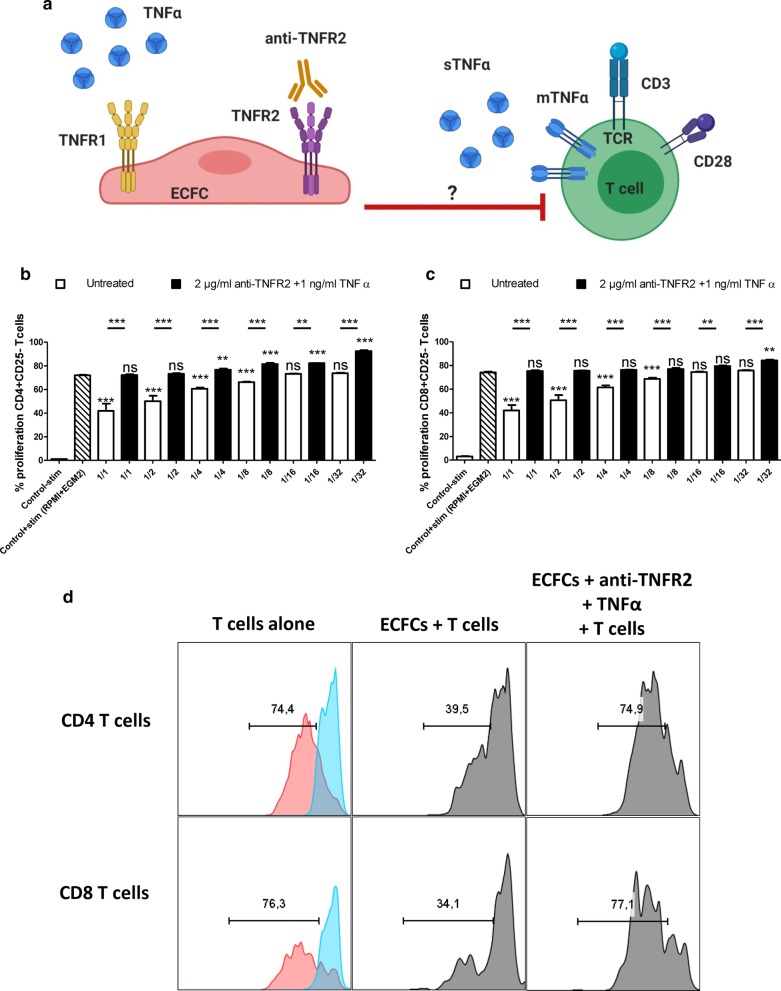Fig. 5.
Primed EFCF’s increased immunosuppressive effect is TNFα-TNFR2 dependent. a This schematic depicts our hypothesis based on the immunogenic effect of TNFα treatment on ECFC while TNFR2 is blocked. Briefly, in the absence of TNFR2, treating ECFCs with TNFα could merely stimulate TNFR1. Therefore, we have hypothesized that in this setting, ECFCs may not properly exert their immunosuppressive effect. b ECFCs were treated with 2 µg/ml of anti-TNFR2 neutralizing Ab for 24 h followed by 1 ng/ml of TNFα for another 24 h. Activated CFSE+CD3+CD25− responder T cells were co-cultured with CB-ECFCs in different ECFC/T cell ratios (n = 8). Proliferation of CD4+ T cells (b) and CD8+ T cells (c) was measured by flow cytometry. The first bar represents the unstimulated T cells alone, the second bar represents the anti-CD3/CD28 stimulated T cells alone in 50% RPMI + 50% EGM2 media. d A flow cytometry representative of proliferation assay at 1:1 ECFC to T cell ratio. Un-stimulated T cells alone are depicted in blue and their activated counterparts are depicted in red. Each histogram bar represents the percent of dividing cells. Data are represented as mean value ± SEM collected from 2 different experiments. One way ANOVA or Student t test analysis was performed to generate P values. ns: non-significant, *P < .05; **P < .01; ***P < .001. Stim: Anti-CD3/CD28 activation Beads

